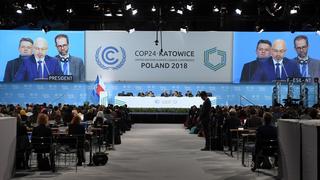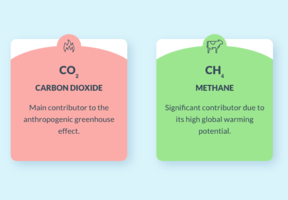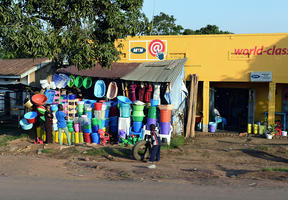COP24: Tentative Steps, But No Leap Forward
Published on 04.25.201910 min read
The Conference of the Parties ( ) is an annual meeting held since 1995 and attended by representatives of the 197 parties to the United Nations Framework Convention on Climate Change (UNFCCC). COP3 produced the , COP15 coincided with the Copenhagen Summit and COP21 in December 2015 adopted the Paris Agreement, the first universal accord on climate change. This article looks at the key outcomes of COP24 held in Katowice, Poland in December 2018.

© JANEK SKARZYNSKI / AFP - The opening ceremony of the COP24 climate conference in Katowice, Poland, in December 2018, three years after the universal agreement reached at the COP21 in Paris.
Between COP23 and COP24, the IPCC1 published an alarming special report on the potential impact of a 1.5°C increase in the planet’s average temperature. Moreover, according to a U.N. report, emissions rose by 1.1% in 2017, after having remained stable throughout the three previous years2.
This bleak outlook formed a dark cloud over COP24, yet it failed to produce better results than those delivered in the Paris Agreement. Some 23,000 people attended the summit, of which 14,000 official delegates and 9,000 observers.
COP24 Agenda
COP24 had three main items on the agenda.
- The Paris Agreement Rulebook: This mainly involved reaching an agreement on how governments should measure their GHG emissions performance, based on the belief that a common set of tools is vital for building trust between countries. Most of the major issues were settled in a 100-page set of guidelines for implementing the Paris Agreement known as the “rulebook”. Outcome: fairly positive.
- Reassessment of national targets: Unlike the Kyoto Protocol, the Paris Agreement did not set shared binding targets, but rather counted on all countries to put forward their best efforts and determine their own national “contribution” level. Yet the nationally determined contributions recorded in Paris in December 2015 fell short of the mark, causing experts to anticipate global temperature rises of 3°C by 2100, instead of the 2°C considered the maximum possible limit.3 Countries did not step up their ambitions at COP24, pushing the issue further down the line to 2020. Outcome: negative.
- North-South climate financing: As industrialized countries are responsible for the accumulation of greenhouse gases in the atmosphere since the industrial revolution, this item concerned their financial aid to newly emerging economies to help counter the effects of climate change. The Copenhagen Summit in 2009 had set a target of $100 billion per year as of 2020. Ostensibly, this target is on track although developing countries contest certain figures. Outcome: fairly positive.
Upcoming International Climate Change Summits
The fundamental question of national contributions, which remained unchanged at Katowice, is to be reviewed at the Climate Action Summit organized by the United Nations in New York on September 23, 2019. For this event, U.N. Secretary-General António Guterres hopes to convene higher echelons of the world’s leaders.
Chile will host COP25 at the end of 2019. Initially, the summit was to be held in Brazil, but President Jair Bolsonaro, who took up office in 2018 and shares U.S. President Donald Trump’s skeptical attitude toward climate change, backed out, officially for “budgetary reasons”.
President Trump announced his country’s withdrawal from the Paris Agreement in June 2017, but this will not take effect until 2020, the same year as the next presidential elections. Meanwhile, the United States’ official delegation is still taking part in the COP’s work.
- Intergovernmental Panel on Climate Change.
- See the Emissions Gap Report
- The Paris Agreement on climate change called on countries to limit the average rise in global temperatures to “well below 2°C” by 2100, and even to pursue efforts to stay below 1.5°C.



















